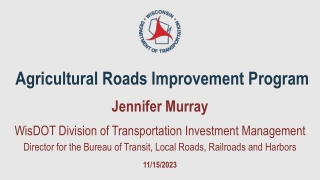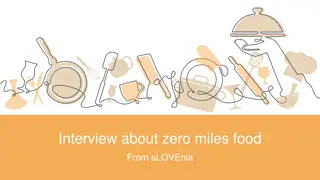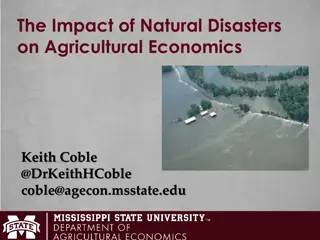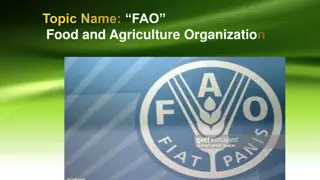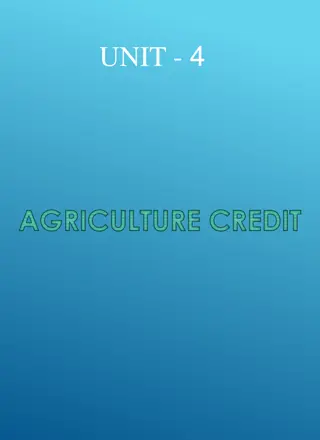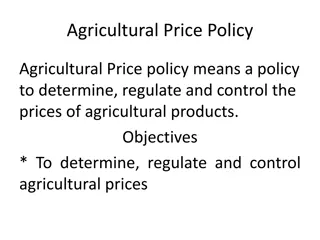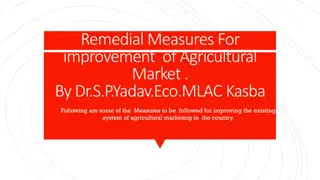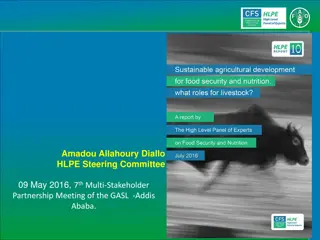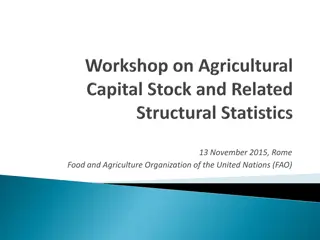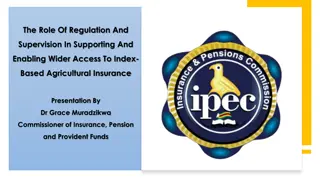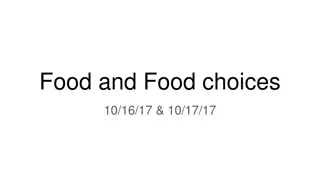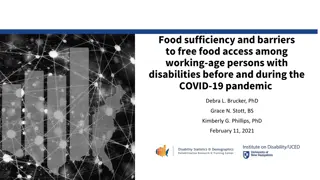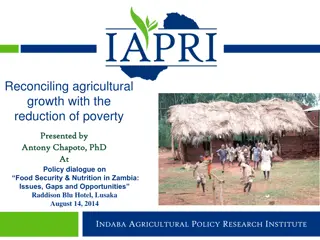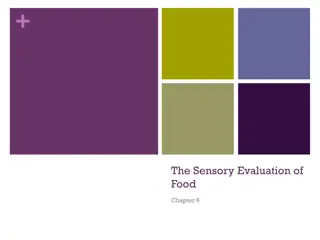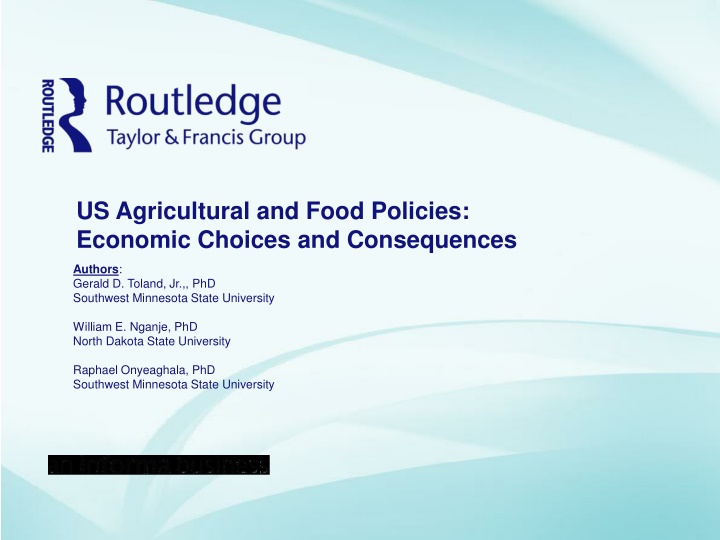
US Agricultural and Food Policies: Economic Choices and Consequences
Addressing future trends and policy changes in the US agri-food sector, this book explores different methods of policy change and their impacts on the agricultural and food systems. It discusses the Global Food Security Act of 2016 as a promising policy example that aims to improve farm productivity, combat hunger, promote nutrition, alleviate poverty, and stimulate economic growth on a global scale.
Download Presentation

Please find below an Image/Link to download the presentation.
The content on the website is provided AS IS for your information and personal use only. It may not be sold, licensed, or shared on other websites without obtaining consent from the author. If you encounter any issues during the download, it is possible that the publisher has removed the file from their server.
You are allowed to download the files provided on this website for personal or commercial use, subject to the condition that they are used lawfully. All files are the property of their respective owners.
The content on the website is provided AS IS for your information and personal use only. It may not be sold, licensed, or shared on other websites without obtaining consent from the author.
E N D
Presentation Transcript
US Agricultural and Food Policies: Economic Choices and Consequences Authors: Gerald D. Toland, Jr.,, PhD Southwest Minnesota State University William E. Nganje, PhD North Dakota State University Raphael Onyeaghala, PhD Southwest Minnesota State University
US Agricultural and Food Policies: Economic Choices and Consequences Chapter 14 Anticipating Future Trends in Agricultural and Food Policy Chapter Fourteen Objectives Summary of Chapter Fourteen: In our concluding chapter, we address two questions, one positive, and the other normative: What are the likely future trends in US agri-food policy? What should be the future of US agri-food policy? As we look to the future, we organize our final chapter as follows: We interpret positive and normative influences that are driving changes in US agri-food policy. We examine choices and consequences associated with two methods of policy change: broad-based major transformation, or gradual marginal adjustment. 2
US Agricultural and Food Policies: Economic Choices and Consequences Chapter 14 Anticipating Future Trends in Agricultural and Food Policy As we look to the future, we organize our final chapter as follows: (Continued) We review three types of policy change: planned, remedial and developmental We review market imperfections and the need for intentional effort to continue improvement in the US agri-food system We utilize Albert Hirschman s Exit, Voice and Loyalty paradigm to suggest strategies to implement effective policies that will benefit the US agri-food system now and in the future. 3
US Agricultural and Food Policies: Economic Choices and Consequences Chapter 14 Anticipating Future Trends in Agricultural and Food Policy A Promising Policy: Global Food Security Act of 2016 (GFSA) GFSA received strong bipartisan US Congressional support in both Houses, and signed by the President Supports a coordinated strategy to improve farm productivity, combat hunger, promote better nutrition, fight poverty and stimulate economic growth on a global scale. GFSA is an example of how the common good can be pursued when ethical, political and economic goals are aligned. 4
US Agricultural and Food Policies: Economic Choices and Consequences Chapter 14 Anticipating Future Trends in Agricultural and Food Policy Catalysts for Future Change in the US Agri-Food System Chapter 14 identifies the following sources of change in the US Agri- Food System: Evolving US Consumer Demand Advances in Technology Climate Change International Trade and Development Changing Demographics Logic of Collective Action Additional sources of change may also include, but are not limited to, environmental sustainability and food safety. 5
US Agricultural and Food Policies: Economic Choices and Consequences Chapter 14 Anticipating Future Trends in Agricultural and Food Policy Three Options for Structural Reform of US Agri-Food Policy Some interests may be satisfied with status-quo policies But, if there is interest in reform, what are the options for creating change? Options for structural reform of US agri-food policy include: Complete changeover (transformational change). A series of modest incremental improvements. Set of transitions that are not transformational, but constitute more than ordinary change. Each change method has strengths and drawbacks. Views in professional literature favor incremental or transitional approaches. 6
US Agricultural and Food Policies: Economic Choices and Consequences Chapter 14 Anticipating Future Trends in Agricultural and Food Policy Methods to manage incremental or transitional change Industrial concepts of quality assurance and continuous improvement To guide change: Institute standard benchmarks. Emphasize regular and transparent communications to inform stakeholders of both challenges and progress. Create measurement and documentation systems to stimulate honest assessments. Application of these industrial concepts provide a mechanism for the marginal or transitional approach to achieve meaningful long- term change. 7
US Agricultural and Food Policies: Economic Choices and Consequences Chapter 14 Anticipating Future Trends in Agricultural and Food Policy Further refine incremental and transitional changes using options from organizational change theory: Planned Change solve a problem; achieve a goal Remedial Change remedy a recognized shortcoming Developmental Change build on success, make more progress Challenge for all change: distributional consequences Nearly all policy changes create winners and losers. Difficult to design and implement a Pareto Better policy: an option that would make some groups better off without making others worse-off. 8
US Agricultural and Food Policies: Economic Choices and Consequences Chapter 14 Anticipating Future Trends in Agricultural and Food Policy Can Adam Smith s Invisible Hand Produce Desired Change in the US Agri-Food System? Some aspects of US agricultural economy approximate perfectly competitive markets. US Agri-food system s market imperfections mean that the market cannot guarantee efficient outcomes. We can identify the imperfections: Barriers to Entry Market Power Market Externalities Asset Fixity Legally-protected information Invisible Hand (market forces) still powerful; but not perfect. 9
US Agricultural and Food Policies: Economic Choices and Consequences Chapter 14 Anticipating Future Trends in Agricultural and Food Policy Differential incentives for disciplinary and interdisciplinary research in agri-food systems Disciplinary research creates new knowledge within a particular sphere of the agri-food system. Research institutions reward disciplinary scholarly work. Challenge: Insufficient incentives for interdisciplinary research. Agri-system problems often require an interdisciplinary approach to achieve real solutions. Institutions and grant agencies have evolved. incentives for interdisciplinary work are increasing. Coordinated research on interdisciplinary aspects of the agri-food system is a worthwhile academic pursuit. 10
US Agricultural and Food Policies: Economic Choices and Consequences Chapter 14 Anticipating Future Trends in Agricultural and Food Policy Future of Farm and Food Policy Example of private sector taking intentional action to benefit the future: CEO Council on Sustainability and Innovation (a.k.a.,the CEO Council). CEO Council includes top executives from: Kellogg, DuPont, Hormel, Elanco and Land O Lakes. The CEO Council s report highlights three recommendations: Sustainable Productivity Improve sustainable practices Transparency Clear communications with consumers, firms Collaborative Decision Making Coordinate agri-food choices CEO Council: Supports United Nations (UN) 2030 Sustainability Initiatives 11
US Agricultural and Food Policies: Economic Choices and Consequences Chapter 14 Anticipating Future Trends in Agricultural and Food Policy Advice from Albert O. Hirschman s Exit, Voice and Loyalty Albert O. Hirschman s 1970 publication, Exit, Voice and Loyalty, offered a perspective on the capacity of systems to remain sustainable by responding to three factors: Exit Option When consumers are dissatisfied with a good or service, they can quietly withdraw and take their business elsewhere. Voice Option Some consumers, rather than instantly exiting, may exercise their voice, and file a complaint. Role of Loyalty Voice is a costly option compared to exit. What motivates voice? If loyalty is strong enough, consumers can judge the voice option to be rational. 12
US Agricultural and Food Policies: Economic Choices and Consequences Chapter 14 Anticipating Future Trends in Agricultural and Food Policy Advice from Albert O. Hirschman s Exit, Voice and Loyalty (Continued) In Hirschman s scenario, if the Agri-Food System can win loyal participants, then it can listen to the voices of change and respond appropriately, while not losing members to exit. Connection between voice and loyalty can be interpreted when we link it to Mancur Olson s observations about the limits of collective action. Collective action can be rational if loyalty motivates individuals to perceive that when they join voices with others, then the chances of affecting change increase. 13

